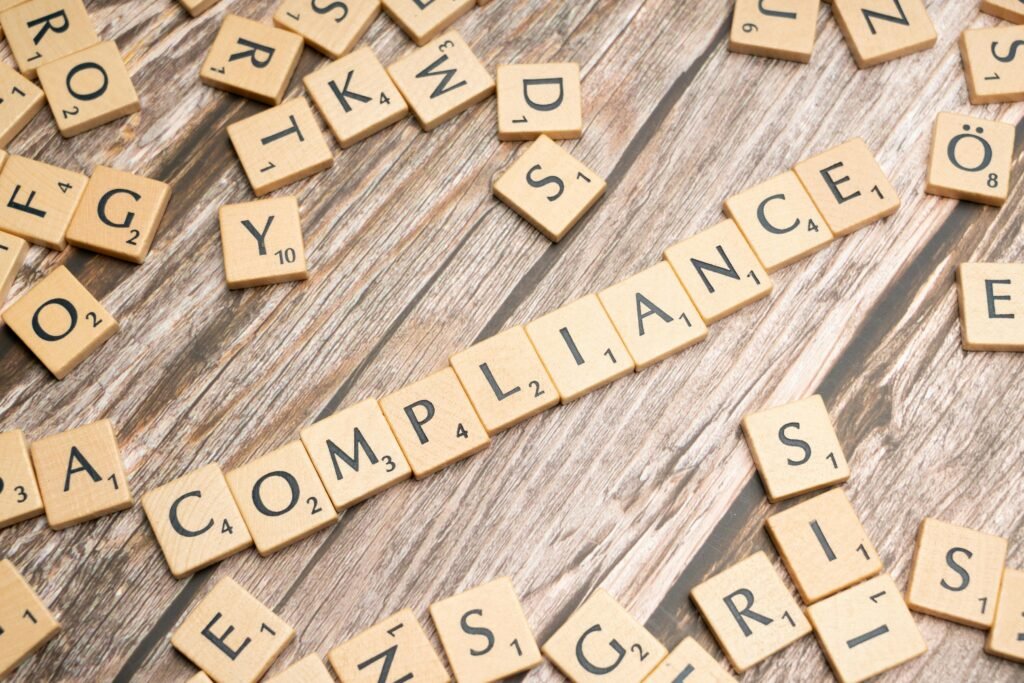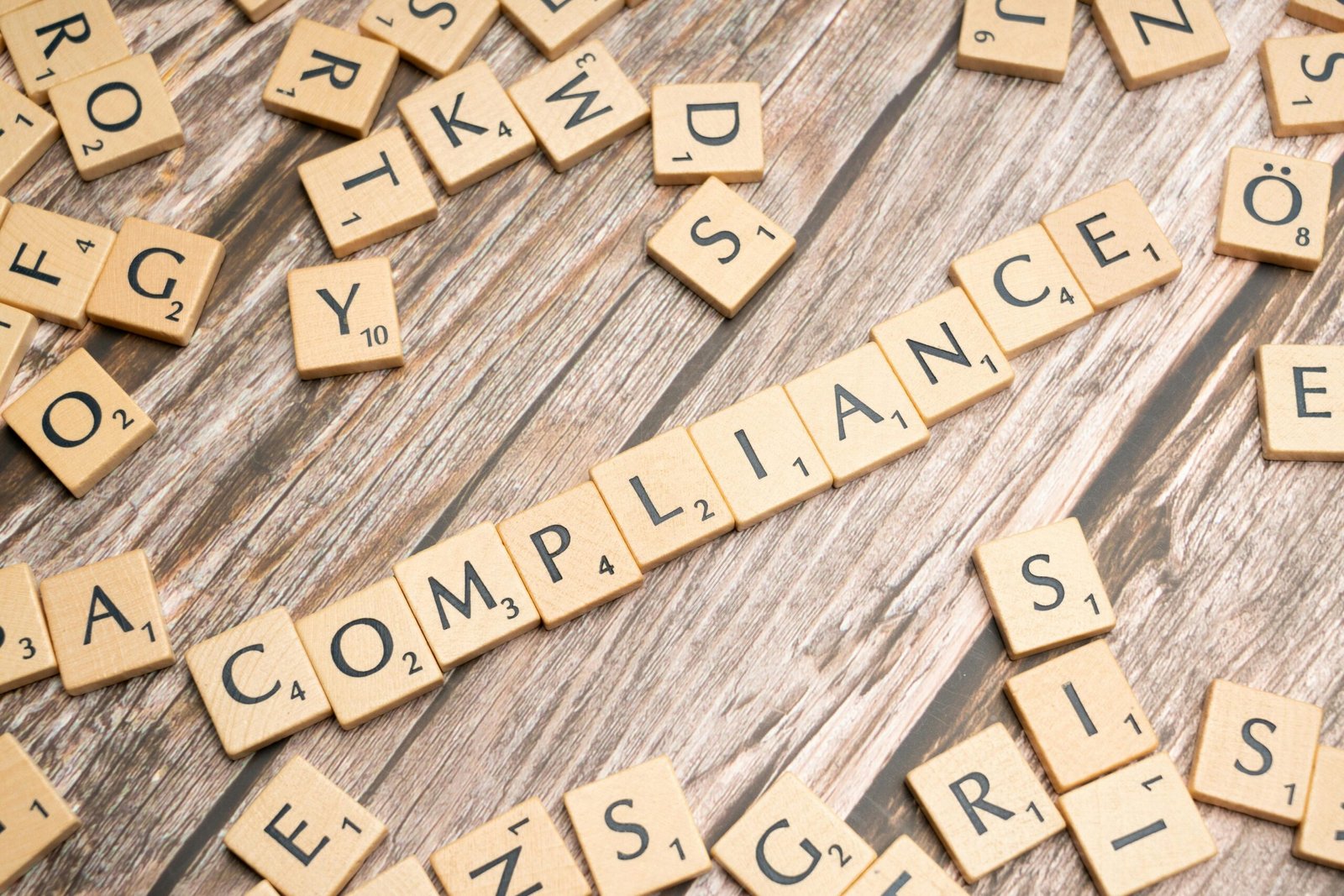In today’s article, you will explore the crucial connection between compliance and gun safety. We will delve into the regulations and guidelines that govern gun safes, and how adhering to these measures can have a significant impact on ensuring the well-being of individuals and communities. By understanding the importance of compliance when it comes to gun safety, you will gain valuable insights into how to promote responsible firearm ownership. So let’s embark on this journey of awareness together, discovering the role compliance plays in ensuring a safer environment for everyone.

This image is property of images.pexels.com.
Defining Compliance
The concept of compliance
Compliance refers to adhering to laws, regulations, and standards set by the government or relevant authorities. In the context of gun safety, compliance entails following the rules and requirements implemented to ensure the responsible ownership, possession, and usage of firearms. It plays a crucial role in maintaining public safety and preventing firearm-related accidents and crimes.
Compliance in the context of gun safety
Compliance in gun safety revolves around the measures and procedures aimed at achieving responsible firearm ownership and usage. It encompasses various aspects, including knowledge of applicable laws, obtaining the necessary licenses and certifications, proper record-keeping, and utilizing firearm safety devices and technologies. By complying with these regulations, individuals contribute to the overall safety and well-being of their communities.
Importance of compliance in ensuring gun safety
Compliance holds significant importance in ensuring gun safety for both the individual gun owner and the general public. By adhering to gun laws and regulations, individuals can help prevent accidents and misuse of firearms, reducing the risk of harm to themselves and others. Compliance also helps law enforcement agencies in their efforts to maintain public safety by enabling them to identify and address potential risks effectively. In essence, compliance acts as a vital tool in fostering a culture of responsible gun ownership and enhancing overall gun safety.
Gun Laws and Regulations
Overview of existing gun laws
Gun laws vary across different jurisdictions. In the United States, gun laws are established at both the federal and state levels. While federal laws provide a framework, states have the autonomy to enact additional regulations to suit their specific needs. These laws address various aspects of gun ownership, possession, and usage, including purchasing requirements, background checks, waiting periods, age restrictions, and restrictions on certain types of firearms.
Federal and state regulations
Federal regulations provide a baseline for gun laws in the United States. The National Firearms Act (NFA) of 1934 regulates the ownership and possession of certain types of firearms, such as machine guns and suppressors. The Gun Control Act (GCA) of 1968 established licensing requirements for firearm dealers and prohibited specific categories of individuals, such as convicted felons, from owning firearms. Additionally, each state has its own set of regulations, which may include waiting periods, additional background check requirements, and specific provisions for concealed carry.
Background checks and waiting periods
Background checks and waiting periods are integral components of gun laws aimed at ensuring responsible ownership and preventing prohibited individuals from acquiring firearms. Background checks involve assessing an individual’s criminal history, mental health records, and other relevant factors to determine their eligibility for firearm ownership. Waiting periods require a certain period of time between the purchase and delivery of a firearm, allowing for thorough background checks and reducing impulsive acquisitions.
Licensing and registration requirements
Many jurisdictions require individuals to obtain licenses or permits before purchasing or possessing firearms. These requirements vary from state to state and may involve an application process, background checks, and the completion of firearm safety training. Registration requirements, on the other hand, involve recording the details of firearm ownership with relevant authorities, facilitating traceability and accountability.
Restrictions on firearm ownership and possession
Gun laws often include specific restrictions on firearm ownership and possession to enhance public safety. These restrictions may pertain to high-capacity magazines, assault weapons, certain firearm accessories, and certain individuals, such as convicted felons or those with restraining orders. By limiting access to potentially dangerous firearms and individuals, compliance with these restrictions contributes to reducing the risk of firearm-related incidents.
Impact of gun laws on compliance and gun safety
Gun laws play a crucial role in shaping compliance rates and overall gun safety in a society. When well-crafted and effectively enforced, these laws can motivate individuals to comply with the regulations in place, resulting in safer gun practices. Conversely, lax or inconsistent gun laws may create a climate of noncompliance and increase the potential for firearm-related incidents. A balance between appropriate regulations, enforcement measures, and public education is crucial for maximizing compliance and ensuring the desired impact on gun safety.

This image is property of images.pexels.com.
Compliance Measures
Education and training programs
Education and training programs are essential in promoting compliance with gun safety regulations. Providing individuals with comprehensive knowledge of applicable laws, responsible firearm handling techniques, and safe storage practices helps foster a culture of compliance. These programs can be offered by law enforcement agencies, firearm organizations, and educational institutions, ensuring that individuals have access to the necessary information and skills to comply with gun safety regulations.
Certifications and licenses
Certifications and licenses serve as proof of an individual’s qualifications to own, possess, or use firearms in compliance with applicable regulations. These certifications can be obtained through completing firearm safety courses, passing proficiency tests, and meeting other specific requirements set by the authorities. By making certifications and licenses a part of compliance measures, governments and law enforcement agencies can promote responsible gun ownership and ensure individuals possess the necessary knowledge and skills to handle firearms safely.
Record-keeping and documentation
Effective record-keeping and documentation play a vital role in enforcing compliance and ensuring accountability. This includes keeping accurate records of firearm purchases, transfers, and ownership changes. It allows authorities to track firearms, verify ownership, and investigate potential violations. Additionally, documentation requirements for licenses, permits, and background checks facilitate transparency and enable law enforcement to quickly ascertain an individual’s compliance with relevant regulations.
Firearm safety devices and technologies
Firearm safety devices and technologies serve as an important aspect of compliance measures by providing physical safeguards to prevent unauthorized access or accidental discharge. Examples include trigger locks, safes, biometric locking systems, and smart guns. Encouraging or mandating the use of such devices promotes responsible firearm storage and reduces the potential for accidents or unauthorized use. By integrating these safety measures, compliance can help mitigate risks associated with firearms.
Safe storage solutions
Safe storage solutions are crucial in maintaining compliance and preventing access to firearms by unauthorized individuals. Requirements for storing firearms in locked containers or utilizing secure storage facilities contribute to responsible gun ownership. Promoting the use of proper storage solutions reduces the risks of accidental shootings, thefts, and access to firearms by individuals who should not possess them, enhancing overall gun safety.
Enforcement mechanisms and penalties
Enforcement mechanisms and penalties are instrumental in ensuring compliance with gun safety regulations. Law enforcement agencies play a vital role in enforcing these regulations through carrying out inspections, investigating potential violations, and holding individuals accountable for non-compliance. Penalties for non-compliance can range from fines and license revocations to imprisonment, depending on the severity of the violation. By effectively enforcing compliance measures, authorities deter non-compliance and encourage responsible gun practices.
Challenges in promoting compliance
Promoting compliance with gun safety regulations is not without its challenges. Lack of awareness and understanding of applicable laws and regulations can hinder compliance efforts. Limited access to resources and information, particularly in marginalized communities, can also impede compliance rates. Financial constraints may pose difficulties for individuals to afford necessary training, licensing fees, or safety devices. Additionally, resistance to regulations and concerns about individual rights can create barriers to achieving high levels of compliance. Addressing these challenges requires a multi-faceted approach involving education, outreach, and targeted support mechanisms to ensure widespread compliance.
Role of Government Agencies
Responsibilities of federal agencies
Federal agencies play a crucial role in establishing and enforcing gun laws at the national level. The Bureau of Alcohol, Tobacco, Firearms and Explosives (ATF) is responsible for administering federal firearms laws, conducting background checks, regulating the firearms industry, and investigating firearm-related crimes. The Federal Bureau of Investigation (FBI) oversees the National Instant Criminal Background Check System (NICS) and aids in enforcing federal gun laws. These agencies provide the infrastructure and expertise necessary for effective compliance and overall gun safety.
State and local agencies’ role in compliance
While federal agencies set the framework, state and local agencies play a significant role in ensuring compliance with gun safety regulations. They are responsible for enforcing state-specific laws, overseeing licensing and permitting processes, conducting investigations, and educating the public about local firearm regulations. State and local law enforcement agencies also collaborate with federal agencies to coordinate efforts in preventing firearm-related crimes and promoting compliance.
Collaboration between agencies for gun safety
Collaboration between federal, state, and local agencies is essential for achieving comprehensive gun safety and promoting compliance. Sharing resources, information, and intelligence can lead to more effective enforcement and streamlined compliance measures. Cooperation between agencies also allows for a coordinated approach in addressing challenges, exchanging best practices, and implementing consistent standards for compliance. By working together, government agencies can maximize their impact on gun safety and foster a culture of compliance.
Effectiveness of government efforts
The effectiveness of government efforts in promoting compliance and enhancing gun safety depends on several factors. Clear and well-communicated regulations enable individuals to understand their responsibilities and the consequences of non-compliance. Adequate allocation of resources to support education, enforcement, and outreach initiatives is crucial in ensuring compliance rates. Consistent enforcement of regulations, coupled with regular audits and inspections, helps maintain accountability and deter non-compliance. Additionally, ongoing evaluation and adaptation of compliance measures based on data and feedback allow for continuous improvement and increased effectiveness.

This image is property of images.pexels.com.
Industry Compliance Initiatives
Voluntary compliance programs
The firearms industry plays a significant role in promoting compliance and ensuring gun safety by implementing voluntary compliance programs. These programs may involve establishing industry-wide standards, best practices, and guidelines for responsible firearm manufacturing, distribution, sales, and training. By voluntarily adhering to these programs, manufacturers, dealers, and other industry stakeholders demonstrate their commitment to promoting responsible gun practices and minimizing risks associated with firearms.
Trade associations and their role
Trade associations within the firearms industry can play a pivotal role in promoting compliance and gun safety. These associations bring together industry stakeholders, including manufacturers, retailers, and firearm organizations, to collectively address compliance challenges and share best practices. They provide a platform for knowledge exchange, training initiatives, and advocacy efforts aimed at increasing compliance rates. By working collaboratively, trade associations help establish industry-wide standards and contribute to the overall improvement of compliance measures within the firearms industry.
Promoting best practices in gun safety
The firearms industry has the opportunity to promote best practices in gun safety through various means. This includes developing and manufacturing innovative safety devices, such as integrated trigger locks or personalized biometric systems, that enhance compliance and prevent unauthorized access to firearms. Additionally, industry stakeholders can participate in public education campaigns, raise awareness about responsible firearm ownership, and support initiatives that encourage compliance with gun safety regulations. By actively promoting best practices, the industry can contribute to the overall improvement of compliance rates and gun safety.
Impact of industry initiatives on compliance
Industry initiatives have the potential to significantly impact compliance rates and gun safety. By establishing voluntary compliance programs and promoting best practices, the firearms industry can influence the behavior of manufacturers, retailers, and firearm owners. These initiatives can lead to increased awareness, improved training standards, and the development of safer firearm technologies. The collective efforts of the industry, in collaboration with government agencies and other stakeholders, can help create a culture of compliance and ultimately enhance overall gun safety.
Compliance Challenges and Barriers
Lack of awareness and understanding
A significant challenge to achieving high compliance rates is the lack of awareness and understanding of gun laws and regulations. Many individuals may not be fully aware of their responsibilities as gun owners or may not understand the specific requirements in their jurisdiction. This lack of awareness can result in unintentional non-compliance and hinder efforts to promote responsible gun ownership. Bridging this knowledge gap through public education campaigns, community outreach, and easily accessible information is crucial for improving compliance.
Access to resources and information
Unequal access to resources and information can create barriers to compliance, particularly among marginalized communities and individuals facing financial constraints. Limited access to affordable training programs, safety devices, and legal assistance can hinder compliance efforts. Governments, community organizations, and industry stakeholders must strive to ensure equal access to these resources and provide targeted support to underserved populations. By eliminating systemic barriers, compliance rates can be improved, resulting in enhanced gun safety for all individuals.
Financial constraints
Financial considerations can also pose challenges to compliance. The costs associated with obtaining licenses, certifications, and appropriate safety devices may be prohibitive for some individuals. The affordability of training programs can also be an issue. To address this challenge, governments and firearm organizations can explore options for subsidizing training fees or providing financial assistance to individuals who demonstrate the need. Making compliance more financially accessible encourages responsible firearm ownership and helps overcome potential barriers.
Resistance to regulations
Resistance to regulations can create significant barriers to compliance. Some individuals may view gun laws as an infringement on their rights or harbor concerns about government overreach. Overcoming this resistance requires open dialogue, factual information, and efforts to address misconceptions. Engaging with stakeholders, including gun owners, firearm organizations, and community leaders, to understand their concerns and provide education helps foster a better understanding of the need for regulations and encourage compliance.
Illegal firearms and black market
The existence of illegal firearms and a thriving black market poses a considerable challenge to compliance efforts and gun safety. Individuals who obtain firearms illegally often bypass the established regulations and pose significant risks to public safety. Addressing this challenge requires robust law enforcement efforts, border control measures, and intelligence sharing to disrupt illicit firearm trafficking networks. By minimizing the availability and flow of illegal firearms, compliance rates can be positively impacted, contributing to enhanced overall gun safety.
Evaluating Compliance’s Impact on Gun Safety
Reduction in firearm accidents and unintentional shootings
One of the key ways to evaluate the impact of compliance on gun safety is by assessing its effect on reducing firearm accidents and unintentional shootings. Compliance measures, such as proper storage requirements, mandatory training, and the use of safety devices, contribute to minimizing the risks of accidental discharges and unauthorized access to firearms. By promoting responsible firearm ownership and reducing the occurrence of preventable accidents, compliance can significantly improve overall gun safety.
Preventing unauthorized access to firearms
The effectiveness of compliance efforts can be evaluated by assessing their impact on preventing unauthorized access to firearms. By enforcing background checks, waiting periods, and secure storage requirements, compliance measures contribute to reducing the likelihood of firearms falling into the wrong hands. Preventing unauthorized access is crucial in mitigating the risks of firearm-related crimes, domestic violence incidents, and self-harm. Monitoring instances where unauthorized access was thwarted allows for evaluating the effectiveness of compliance measures.
Lowering firearm-related crimes
Another important aspect to consider when evaluating compliance’s impact on gun safety is its effect on lowering firearm-related crimes. Compliance measures, such as background checks and restrictions on certain individuals, play a vital role in preventing convicted felons, individuals with restraining orders, and those with severe mental health issues from acquiring firearms legally. By reducing the availability of firearms in the hands of potential offenders, compliance can contribute to a decrease in firearm-related crimes and enhance community safety.
Effectiveness of compliance measures in reducing risks
To evaluate the impact of compliance on gun safety, it is crucial to assess the effectiveness of various compliance measures in reducing risks associated with firearms. Monitoring statistics related to accidental discharges, firearm thefts, and domestic violence incidents involving firearms can provide insights into the effectiveness of compliance measures. Additionally, analyzing compliance rates and their correlation with reductions in firearm-related injuries and deaths can help gauge the overall impact of compliance efforts on improving gun safety.
Public Perception and Attitudes
Public opinion on gun control and compliance
Public opinion on gun control and compliance varies widely, reflecting a diverse range of perspectives. Some individuals strongly advocate for stricter gun control measures and increased compliance, citing public safety and the prevention of firearm-related incidents. Conversely, others argue for the protection of individual rights and emphasize the importance of responsible gun ownership without excessive regulations. To evaluate the impact of compliance, it is necessary to consider these differing opinions and engage in open dialogue to better understand public sentiment.
Impact on gun ownership and usage
Compliance measures can influence gun ownership and usage patterns within a society. Increasingly strict regulations and enhanced compliance requirements may deter some individuals from owning firearms altogether. Conversely, individuals who prioritize responsible gun ownership may be more inclined to comply with regulations and acquire firearms legally. Evaluating changes in gun ownership rates and understanding how compliance measures influence legal acquisition can provide valuable insights into their impact on gun ownership and usage.
Gun safety awareness campaigns and their influence
Gun safety awareness campaigns are instrumental in shaping public perception and attitudes towards compliance. These campaigns aim to educate individuals about responsible firearm ownership, safe handling practices, and the importance of compliance with applicable regulations. By raising awareness and promoting the benefits of compliance, these campaigns can influence public opinion, foster a culture of responsible gun ownership, and contribute to improved compliance rates. Evaluating the reach and influence of gun safety awareness campaigns allows for the assessment of their impact on public perception and attitudes.
Effect of compliance on public trust and safety
Compliance with gun safety regulations has the potential to influence public trust and perceptions of safety. When individuals comply with regulations, demonstrating their commitment to responsible firearm ownership, it can contribute to a sense of security within the community. Conversely, non-compliance can erode public trust and raise concerns about the potential risks associated with firearms. Evaluating public trust levels and perceptions of safety, in relation to compliance rates, provides insights into the impact of compliance on fostering a safe and secure environment.
International Perspectives on Compliance
Comparison of gun laws and compliance measures
Gun laws and compliance measures vary significantly across different countries and jurisdictions. Some countries have stringent regulations in place, requiring thorough background checks, licensing, and registration for firearm ownership. Other countries may have more relaxed laws, allowing for easier access to firearms. Comparing different countries’ gun laws and evaluating the corresponding compliance rates can provide insights into the impact of regulatory frameworks on compliance and overall gun safety.
Lessons from countries with strict regulations
Countries with stricter gun regulations can offer valuable lessons in achieving higher compliance rates and enhancing gun safety. These countries often prioritize comprehensive background checks, licensing, and registration requirements, along with education and training programs for firearm owners. Examining the success and challenges faced by such countries in promoting compliance can inform efforts in countries with less stringent regulations, providing guidance on strategies for improving compliance and gun safety.
International collaborations for gun safety
International collaborations play a significant role in advancing gun safety through enhanced compliance measures. Sharing best practices, knowledge, and experiences among countries allows for the identification of effective compliance measures and their potential application in different contexts. Collaborations can involve initiatives such as intelligence sharing, joint research projects, and policy exchanges. By working together, countries can learn from each other’s successes and challenges, driving progress in compliance and gun safety worldwide.
Understanding cultural differences in compliance
Cultural differences heavily influence compliance rates and perceptions of gun safety. Cultural norms, attitudes towards firearms, and the historical context surrounding gun ownership vary significantly across different countries and regions. Understanding these cultural differences is crucial in designing compliance measures that align with societal values and expectations. By taking into account cultural nuances, governments and policymakers can tailor compliance strategies to effectively promote responsible firearm ownership and ensure the desired impact on gun safety.
Future Directions and Recommendations
Improving compliance rates and effectiveness
To improve compliance rates and effectiveness, there are several key recommendations to consider. Enhancing public education campaigns, ensuring access to training and resources for all individuals, and streamlining compliance processes can help overcome barriers to compliance. Governments and law enforcement agencies should also prioritize proactive communication and engagement with stakeholders to address concerns and misconceptions. Regular evaluation and updates to compliance measures based on data and feedback are essential for continuous improvement and increased compliance rates.
Enhancing law enforcement efforts
Enhancing law enforcement efforts is vital in achieving higher compliance rates and promoting gun safety. Adequate resources, specialized training, and collaborations between local, state, and federal agencies can strengthen enforcement measures. Implementing technology-driven solutions, such as digitized record-keeping systems and improved data sharing among agencies, can enhance the efficiency of enforcement efforts. By investing in law enforcement capabilities and supporting their efforts, governments can effectively enforce compliance measures and ensure public safety.
Technological advancements in gun safety
Technological advancements offer promising opportunities to enhance compliance and gun safety. Continued research and development in smart gun technologies can enable personalized access and increase the security of firearms. Innovations in biometrics, GPS tracking, and gun safety devices can further enhance the effectiveness of compliance measures. Governments, industry stakeholders, and researchers should collaborate to foster the development and adoption of these technologies, ensuring they align with the principles of responsible gun ownership and compliance.
Public education and awareness campaigns
Public education and awareness campaigns are vital in increasing compliance rates and fostering a culture of responsible gun ownership. These campaigns should emphasize the importance of compliance with gun safety regulations, highlight the benefits of responsible firearm ownership, and provide easily accessible information on local laws and requirements. Collaboration with community organizations, schools, and firearm associations can help amplify the reach and impact of these campaigns. By investing in comprehensive public education initiatives, governments can empower individuals with the knowledge and understanding necessary for compliance.
Balancing individual rights and public safety
Balancing individual rights and public safety is crucial when designing compliance measures. Achieving this balance requires careful consideration of constitutional rights, societal expectations, and the overall goal of enhancing gun safety. Governments and policymakers should engage in open and inclusive dialogues with stakeholders to ensure that compliance measures respect individual rights while effectively ensuring public safety. By approaching compliance from a balanced perspective, authorities can establish regulations and measures that are both effective and reflective of the diverse needs and values of society.
